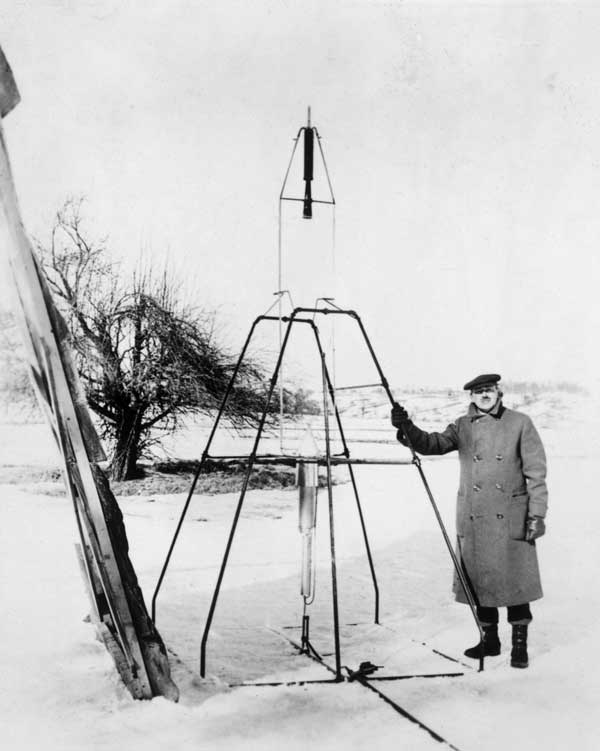
Photo Gallery
Overview
Display location:
Length: 11 feet 3 inches
Weight: 10.4 pounds (fueled)
Thrust: about 9 pounds
History
A full-sized replica of Dr. Robert Goddard’s first successful liquid-fueled rocket is on display in the Exhibit Hall. The first successful flight of this type rocket was on 16 March 1926 at Auburn, Massachusetts. The flight lasted 2.5 seconds and the rocket reached an altitude of about 41 feet.
The thrust chamber (engine) is actually on the top of the rocket. Tubes feeding fuel (gasoline) and oxidizer (liquid oxygen) run up to the thrust chamber from the pressurized fuel and oxidizer tanks seen at the bottom.
Although the rocket did successfully fly, Dr. Goddard found that this arrangement with the thrust chamber on top was unstable. Later Goddard designs placed the engine at the bottom in the position we acknowledge as standard today.
Other Missile & Rocket Artifacts